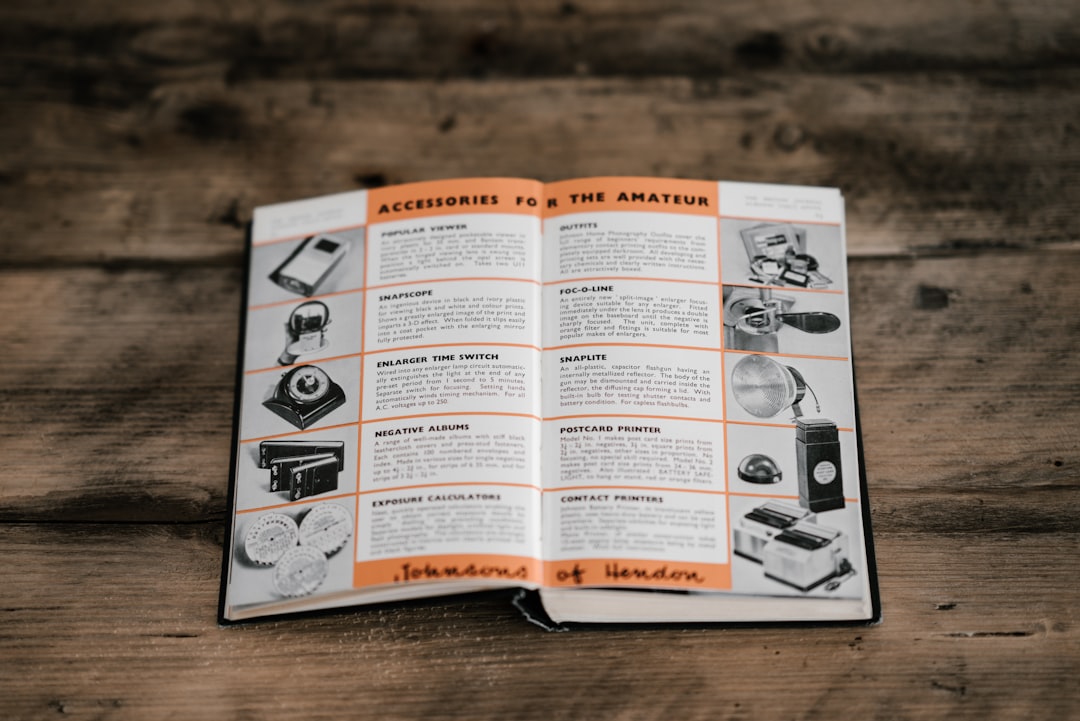
Supercharge your lead generation with a FREE Google Ads audit - no strings attached! See how you can generate more and higher quality leads
Get My Free Google Ads AuditFree consultation

No commitment
Supercharge your lead generation with a FREE LinkedIn Ads audit - no strings attached! See how you can generate more and higher quality leads
Get My Free Google Ads AuditFree consultation

No commitment
Supercharge your lead generation with a FREE Meta Ads audit - no strings attached! See how you can generate more and higher quality leads
Get My Free Google Ads AuditGet My Free LinkedIn Ads AuditGet My Free Meta Ads AuditFree consultation

No commitment
Supercharge your lead generation with a FREE Google Ads audit - no strings attached! See how you can generate more and higher quality leads
Get My Free Google Ads AuditFree consultation

No commitment
In today's rapidly evolving marketing landscape, balancing digital and offline strategies is crucial for catalog showrooms seeking growth and visibility. Google Ads emerges as a pivotal tool within this mix by capturing prospects precisely when they're searching for products or services. However, many showrooms face the challenge of missing high-value prospects because they aren't tracked in the CRM, leading to lost opportunities. Modern solutions now allow businesses to identify anonymous visitors and import them into Google Ads customer match lists, ensuring your ad spend targets real decision‑makers. Whether your catalog showroom hosts large inventories or caters to a niche market, mastering Google Ads can bridge the gap between online visibility and in-showroom visits, driving higher conversions and revenue. This guide explores how to leverage Google Ads effectively to enhance your showroom's reach and impact.

Modern catalog showrooms operate in dynamic environments where high-value leads and efficient sales cycles are critical to sustained growth. Harnessing Google Shopping Ads for Catalog Showrooms enables teams to connect with qualified buyers at the exact moment of intent, driving showroom visits and online conversions with measurable accuracy.
Deploying data-driven strategies ensures each campaign is laser-focused, leveraging advanced segmentation, intent signals, and real-time analytics. Marketers can use these insights to shift budget toward segments showing the highest conversion likelihood, optimizing spend for both online and offline showroom traffic.
For comprehensive strategies on boosting catalog showroom traffic, aligning your ad targeting and audience segmentation with actionable data is essential for maximizing impact and efficiency. If you're ready to take the next step, get started for free with Sona.

Catalog showrooms face unique marketing hurdles: high SKU counts, shifting seasonal demand, and the need for targeted, high-intent buyers. Google Shopping Ads provides precision and scalability, making it possible to surface relevant products to decision-makers at the exact moment of need. For deeper strategies on reaching B2B audiences, explore these actionable playbooks.

Ready to optimize your catalog showroom campaigns? Get started for free with Sona.
Catalog showrooms face unique challenges in digital acquisition, given the size of their product catalogs and the complexity of buyer journeys. Unlocking growth starts with precision: identifying the right audiences, surfacing high-intent opportunities, and leveraging real-time signals to guide investment decisions.
Ready to uncover and activate your next growth opportunity? Get started for free with Sona.

Catalog showrooms face distinct challenges in digital advertising due to vast inventories and varied buyer personas. Precision in audience segmentation ensures ad budgets drive measurable impact by reaching the right buyers at the right stage of their journey. To stay updated on best practices for marketing analytics and segmentation, explore our marketing blog.
Ready to unlock greater ROI from your audience segmentation strategy? Get started for free with Sona.

| Industry | Keyword | Monthly Search Volume | Competition Level | Low Bid | High Bid |
| Catalog Showrooms | catalog showrooms | 70 | LOW |
Strong keyword strategy is the foundation of high-performing Google Ads for catalog showrooms. Targeting intent-rich search terms ensures that campaigns reach buyers who are actively researching or comparing products similar to those offered in the showroom environment. For deeper insights on optimizing campaign performance and ROI, explore the latest marketing analytics strategies.
To optimize ads, begin by identifying both high-traffic and long-tail keywords relevant to catalog showrooms and large product catalogs. This includes core terms like "catalog showroom furniture," "modern home decor catalog," and "office equipment catalog," as well as transactional phrases such as "buy showroom lighting online" or "local catalog showroom near me." Strategic bidding on these keyword groups helps allocate spend toward audiences with genuine purchase intent, maximizing return on ad investment. For a comprehensive overview of Google Shopping Ads, including features and campaign setup, see the Google Shopping Ads overview.
Analyzing real-time search behavior allows teams to refine keyword lists dynamically, adjusting for seasonality, trending products, and geographic demand shifts. When marketers can identify visitors and companies engaging with specific catalog categories, they can prioritize high-value segments and shift budget toward keywords driving the most qualified traffic. Integration of CRM and ad platforms further enables enriched audience building, feeding back insights to continually sharpen keyword and bidding strategies based on actual sales outcomes.
For catalog showrooms, aligning keywords with inventory visibility—such as "Google Shopping ads setup," "product visibility on Google," and "Google Ads for local inventory"—drives synergy between online searches and showroom visits. This approach not only boosts showroom traffic but also supports omnichannel conversion tracking, allowing for comprehensive measurement of campaign effectiveness across digital and in-person touchpoints. To experience streamlined keyword and audience management, get started for free with Sona.
A high-performing Google Ads framework for catalog showrooms blends precise targeting with ongoing data-driven refinement. Marketers who leverage structured processes consistently surpass industry benchmarks by ensuring every campaign component—from keywords to conversion tracking—works in lockstep. Unifying real-time intent signals and advanced attribution directly amplifies return on investment, enabling B2B teams to scale outcomes across even the largest product catalogs.
Ready to maximize your campaign performance? Get started for free with Sona.

Expanding a catalog showroom’s footprint requires clear, multi-channel strategies that grow both digital and in-person engagement. Effective execution depends on using advanced data, personalized messaging, and actionable insights to stand out in a competitive marketplace.
Maximizing Google Ads for catalog showrooms demands strategic keyword targeting, audience segmentation, and consistent optimization. For an overview of how Shopping Ads can help promote products online, see the Google Shopping Ads introduction. Unified data platforms help catalog showrooms connect CRM systems, segment audiences by real-time behaviors, and analyze visitor journeys, ensuring every marketing dollar is spent on high-intent prospects. Personalized campaign strategies—built around showroom-specific data—transform passive browser traffic into engaged, high-converting leads, driving measurable improvements in both online and in-person showroom performance. Get started for free with Sona.
Harnessing the power of Google Ads for catalog showrooms can transform the way you connect with potential customers, drawing them into your physical or virtual storefront. By strategically utilizing Google Ads, you can effectively showcase your extensive inventory, attract targeted leads, and drive meaningful traffic to your business.
Throughout this article, we explored the challenges of advertising a large product range and identified key strategies to enhance product visibility. By focusing on targeted ad campaigns, optimizing product listings, and leveraging data-driven insights, you can maximize your advertising efforts and achieve tangible results.
Imagine the possibilities when you integrate these strategies into your marketing approach. Your catalog showroom can become a hub of innovation and customer engagement, setting your business apart from the competition. These actionable steps offer a clear path forward, empowering you to make informed decisions that resonate with your audience.
To take the next step in revolutionizing your marketing strategy, start for free and discover how our platform can elevate your advertising initiatives. Unlock the potential of unified go-to-market data and drive actionable insights for your catalog showroom today.
Optimize Google Ads for a large catalog showroom by using precise keyword targeting, integrating real-time inventory feeds, and employing data-driven strategies to focus on high-conversion segments.
Best practices include connecting Google Ads with real-time inventory, using advanced segmentation, and employing product-centric creative to ensure visibility and relevance for ready-to-buy prospects.
Google Shopping ads specifically target products with precision and scalability, surfacing relevant products to decision-makers at the exact moment of need, unlike traditional Google Ads which may not be as product-focused.
Local inventory ads allow catalog showrooms to advertise only in-stock products, reducing wasted ad spend and increasing relevance for ready-to-buy prospects, which enhances showroom visits and sales.
Measure success by implementing advanced conversion tracking for both online and offline engagements, and using attribution models to unify digital interactions with in-person showroom visits.
Join results-focused teams combining Sona Platform automation with advanced Google Ads strategies to scale lead generation

Connect your existing CRM

Free Account Enrichment

No setup fees
No commitment required

Free consultation

Get a custom Google Ads roadmap for your business
Join results-focused teams combining Sona Platform automation with advanced Meta Ads strategies to scale lead generation

Connect your existing CRM

Free Account Enrichment

No setup fees
No commitment required

Free consultation

Get a custom Google Ads roadmap for your business
Join results-focused teams combining Sona Platform automation with advanced LinkedIn Ads strategies to scale lead generation

Connect your existing CRM

Free Account Enrichment

No setup fees
No commitment required

Free consultation

Get a custom Google Ads roadmap for your business
Join results-focused teams using Sona Platform automation to activate unified sales and marketing data, maximize ROI on marketing investments, and drive measurable growth

Connect your existing CRM

Free Account Enrichment

No setup fees
No commitment required

Free consultation

Get a custom Google Ads roadmap for your business
Over 500+ auto detailing businesses trust our platform to grow their revenue
Join results-focused teams using Sona Platform automation to activate unified sales and marketing data, maximize ROI on marketing investments, and drive measurable growth

Connect your existing CRM

Free Account Enrichment

No setup fees
No commitment required

Free consultation

Get a custom Google Ads roadmap for your business
Over 500+ auto detailing businesses trust our platform to grow their revenue
Join results-focused teams using Sona Platform automation to activate unified sales and marketing data, maximize ROI on marketing investments, and drive measurable growth

Connect your existing CRM

Free Account Enrichment

No setup fees
No commitment required

Free consultation

Get a custom Google Ads roadmap for your business
Over 500+ auto detailing businesses trust our platform to grow their revenue
Our team of experts can implement your Google Ads campaigns, then show you how Sona helps you manage exceptional campaign performance and sales.
Schedule your FREE 15-minute strategy sessionOur team of experts can implement your Meta Ads campaigns, then show you how Sona helps you manage exceptional campaign performance and sales.
Schedule your FREE 15-minute strategy sessionOur team of experts can implement your LinkedIn Ads campaigns, then show you how Sona helps you manage exceptional campaign performance and sales.
Schedule your FREE 15-minute strategy sessionOur team of experts can help improve your demand generation strategy, and can show you how advanced attribution and data activation can help you realize more opportunities and improve sales performance.
Schedule your FREE 30-minute strategy sessionOur team of experts can help improve your demand generation strategy, and can show you how advanced attribution and data activation can help you realize more opportunities and improve sales performance.
Schedule your FREE 30-minute strategy sessionOur team of experts can help improve your demand generation strategy, and can show you how advanced attribution and data activation can help you realize more opportunities and improve sales performance.
Schedule your FREE 30-minute strategy sessionOur team of experts can help improve your demand generation strategy, and can show you how advanced attribution and data activation can help you realize more opportunities and improve sales performance.
Schedule your FREE 30-minute strategy session





Launch campaigns that generate qualified leads in 30 days or less.
